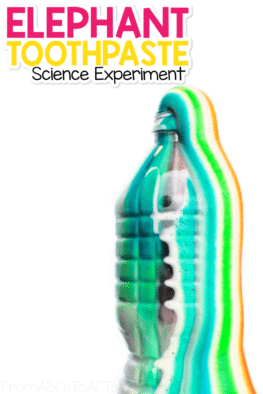This post may contain affiliate links. For more information, please see my full disclosure policy.
Elephant toothpaste is a classic science experiment that kids of all ages love recreating over and over again, and with this one, it won’t matter how many times you try it out, your kids are going to love how it turns out.
The foamy reaction is so much fun, uses just a few basic ingredients that you probably already have in your kitchen at home and if not, you can find them easily at your local drug store, and while the experiment really has nothing to do with elephants or their dental hygiene habits, the look and the name of the experiment help you fit it perfectly into a circus preschool theme!
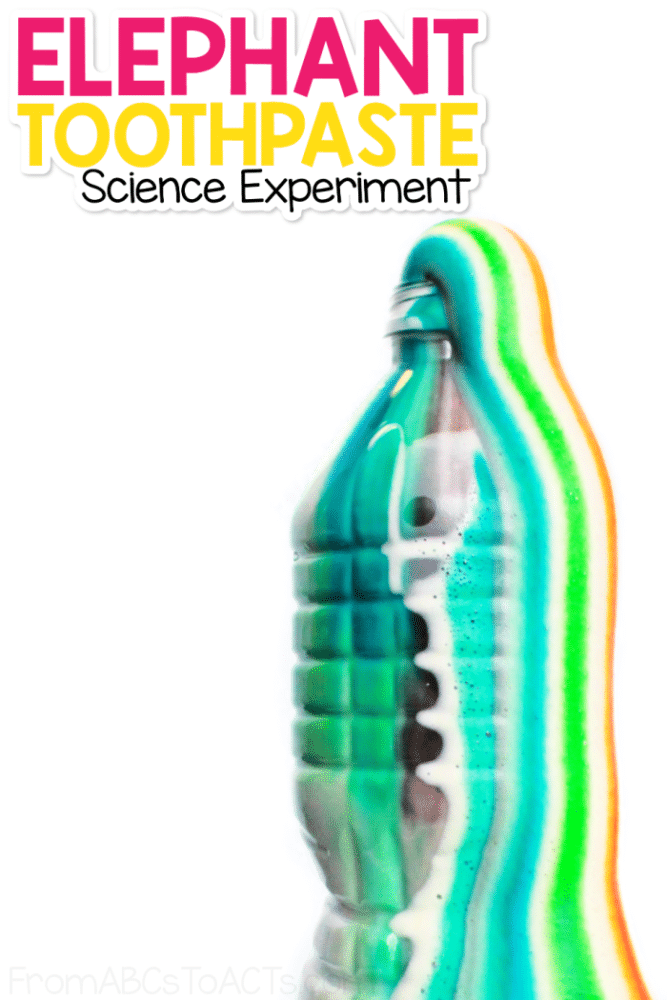
Elephant Toothpaste Experiment
There’s nothing better than a fun, foaming science experiment and this one is so easy to set up.
The chemical reaction itself will amaze your kids, but to really up the wow factor, all you need to do is add some food coloring!
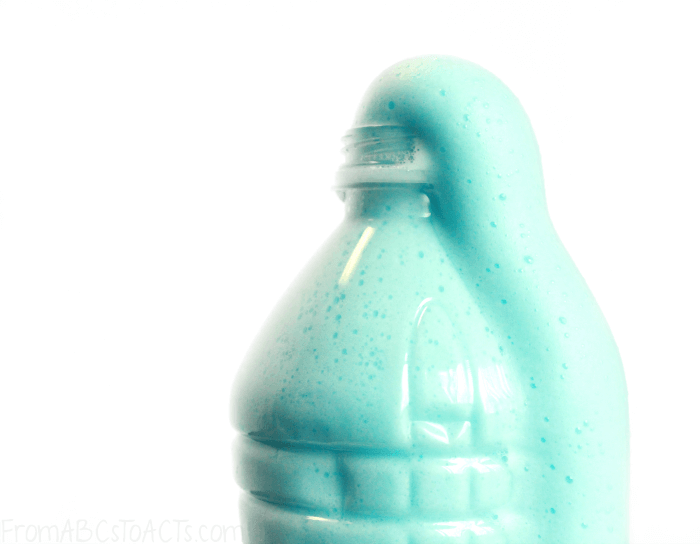
Gorgeous, right? Imagine the possibilities!
Ready to try the simple science experiment for yourself?
Elephant Toothpaste Supplies
- Empty plastic bottle (we’ve used soda bottles and water bottles for this experiment and both sizes have worked well)
- Dawn dish soap
- 1/2 cup hydrogen peroxide
- 1 tsp. yeast
- 2 tbs. very warm water
- Food coloring
- Pan or bowl to contain the foam
- Safety goggles (safety first, of course!)
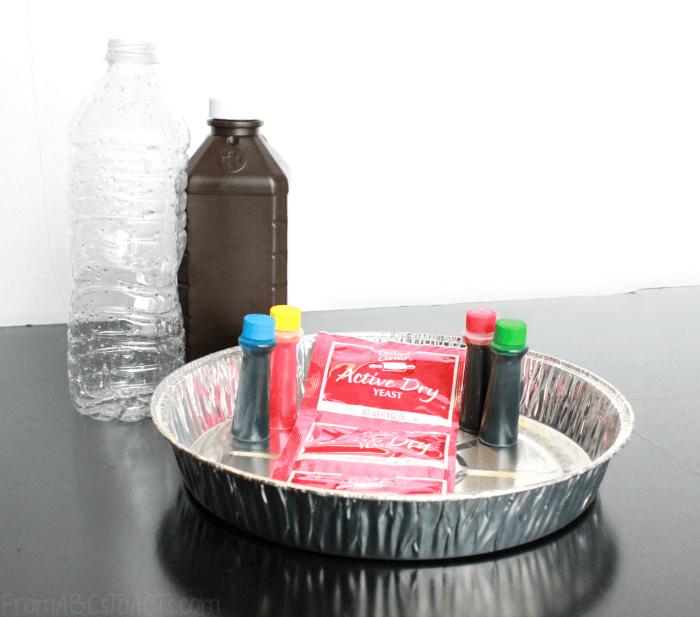
The first thing you’re going to want to do is mix the teaspoon of yeast and a few tablespoons of warm water together in a separate small cup or a small bowl. This will need to be set aside for a few minutes until it foams so it’s best to get that going so that you can set up the rest of your experiment while you wait.
Quick Tip: You do not want the water that you use to be super hot, but you do need it to be rather warm. Adding water that it too hot to the yeast will either damage or kill it and it will no longer work for this experiment.
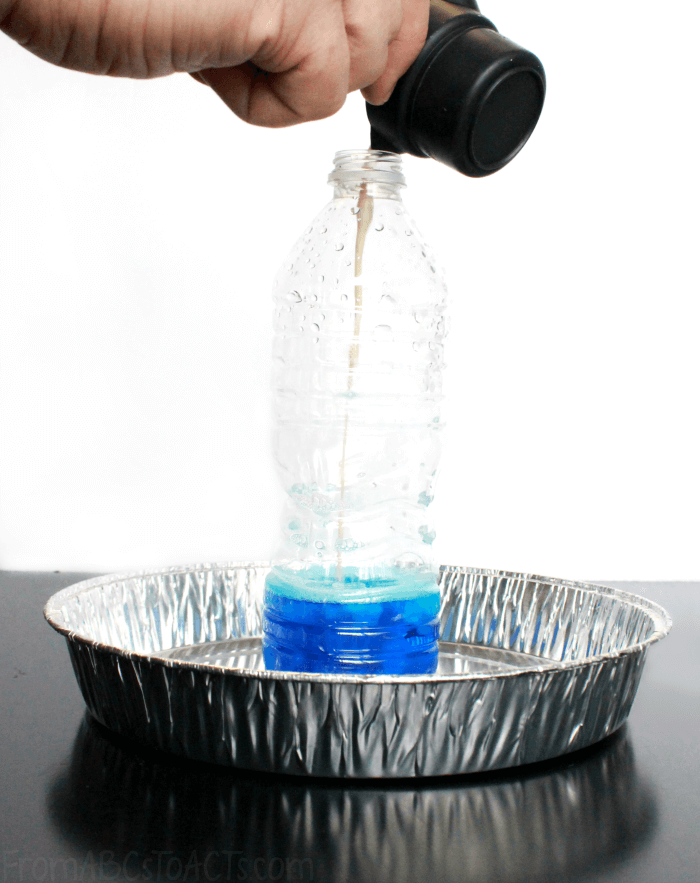
More Awesome Science Experiments for Kids
- 10 Baking Soda Science Experiments for Kids
- Baking Soda and Vinegar Balloon
- Walking Water
- Soda Bottle Speed Boat
Next, you’re going to set your empty bottle into your pan and have an adult carefully pour in the cup of hydrogen peroxide solution, a tablespoon of dish soap, and a few drops of food coloring.
The more food coloring you add, the more vibrant your foam will be when it erupts from the bottle.
If you’re not using an aluminum pan to catch the foam, make sure that you are conducting your experiment on a washable surface.
When those ingredients have been added, give your bottle a little swirl to mix everything together and grab your yeast.
Elephant Toothpaste Reaction
When adding the final ingredient, the yeast, you may want to use a small funnel as this will help you get it all into the bottle without spilling. If you don’t have a funnel, a small measuring cup with a little spout works just as well.
Before adding the yeast, however, you want to make sure that the yeast has been activated. It should have a decent amount of foam on the top of the mixture, if there’s foam, you’re good to go!
Carefully pour the entire yeast mixture into the top of the bottle and then stand back and watch the giant foaming reaction!
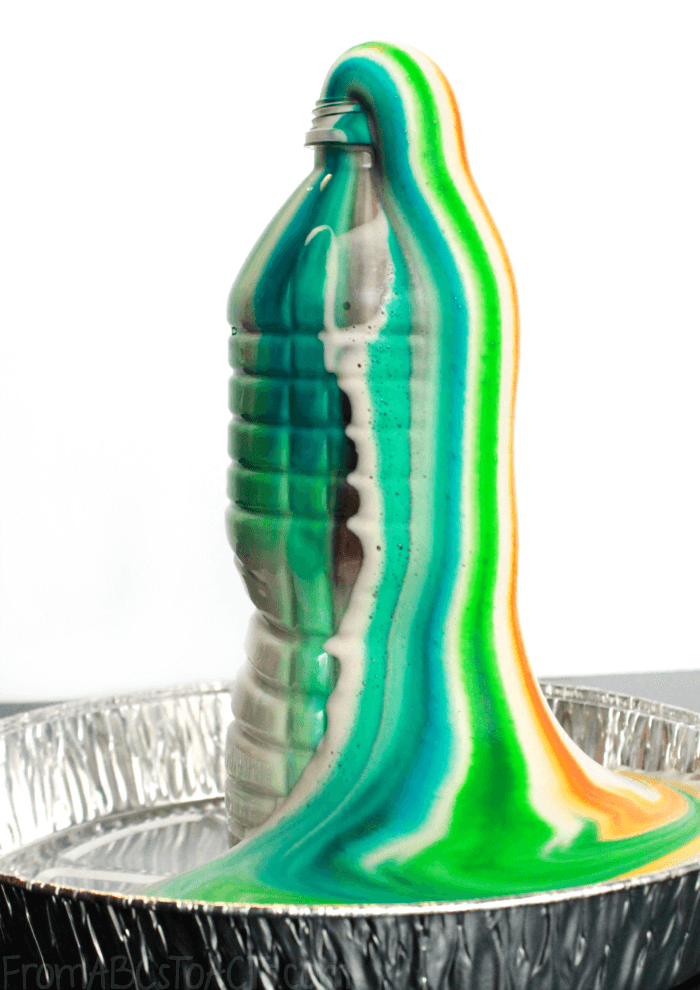
As soon as the reaction starts, you’ll understand exactly why it’s called elephant’s toothpaste. The thick foam comes out and snakes its way all around the side of the bottle.
As with any experiment though, you should have your children wear protective gear like safety glasses while working with these ingredients, even if an adult is the one to pour them.
Another quick safety tip: This foam should not be touched as it comes out of the bottle.
The reaction between the yeast and the peroxide can be quite hot, so make sure they know not to touch until after the reaction ahs stopped and the foam has had a chance to cool down.
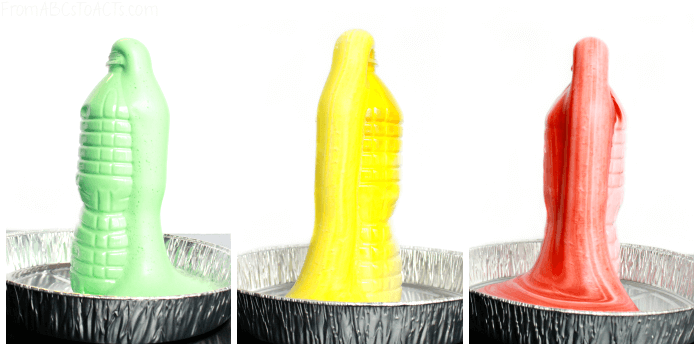
Now, obviously, this is a pretty cool experiment and one that is perfect for introducing your children to basic chemical reactions, but there is so much else that you can learn!
One of the things that we love to do is use this experiment to practice primary and secondary colors.
Have your child choose two different colors of food coloring, both primary colors, and let them guess what color they make when they’re mixed together.
Add a few drops of each to your bottle along with the peroxide and then once the yeast is added and the reaction occurs, let them see if they were right in their predictions!
